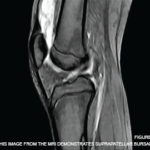In a landmark 2017 study, researchers randomized more than 10,000 patients with previous myocardial infarction and a high sensitivity CRP level of 2 mg or more per liter to receive one of three doses of the IL-1-β inhibitor canakinumab (i.e., 50 mg, 150 mg or 300 mg administered subcutaneously every three months) or placebo. The researchers found that 150 mg of canakinumab given every three months led to a significantly lower rate of recurrent cardiovascular events than placebo, independent of lipid-level lowering.7
Interestingly, the maker of canakinumab—Novartis—submitted proposals in the U.S. and E.U. to approve the use of canakinumab in treating cardiovascular disease. However, the U.S. Food and Drug Administration (FDA) rejected the application due to insufficient evidence supporting the proposed indication. Novartis withdrew its application to European regulators.8
Thromboembolic Disease
With respect to thromboembolic disease, Dr. Szekanecz said several studies have shown an increased risk of venous thromboembolic disease in patients with RA, psoriatic arthritis and ankylosing spondylitis.9-11 This subject has been of particular importance with regard to Janus kinase (JAK) inhibitors.
In July 2019, the FDA issued a safety warning about an increased risk of blood clots and death with the 10 mg twice-daily dose of tofacitinib. This warning was based on a safety trial required by the FDA when it approved tofacitinib for treatment of RA. (The 10 mg, twice-daily dose has not been approved for RA patients, but this dose is approved for patients with ulcerative colitis.) Similar concerns have arisen over baricitinib.12
Dr. Szekanecz discussed a meta-analysis of 26 randomized controlled trials of JAK inhibitors. This analysis found no significant change in cardiovascular risk for JAK inhibitor-treated patients with RA in the short term. However, post-marketing data are needed to evaluate risk over longer periods of time and at higher doses.13
Based on the information to date, EULAR has issued recommendations describing how venous thromboembolic disease has emerged as a new safety issue for tofacitinib, baricitinib and upadacitinib. Clinicians should take into account risk factors for venous thromboembolic disease before initiating patients on these treatments. Risk factors that should be considered include advanced age, history of prior venous thromboembolic disease, elevated body mass index and hormone-replacement therapy.14
During the question-and-answer segment of the lecture, Dr. Szekanecz touched on several interesting concepts, including the theoretical benefits of leflunomide with respect to cardiovascular disease. No large trials have been conducted on this topic, but leflunomide is used as part of certain drug-eluting stents for patients with coronary artery disease. Thus, it’s plausible this medication, when taken systemically, has the potential to act similarly to methotrexate in reducing cardiovascular events. Dr. Szekanecz also noted that IL-6 inhibitors, such as tocilizumab, have been associated with increased lipid parameters and that routine monitoring of the lipid panel is important to continually assess a patient’s cardiovascular disease risk and discuss if other medications, such as a statins, are indicated.


